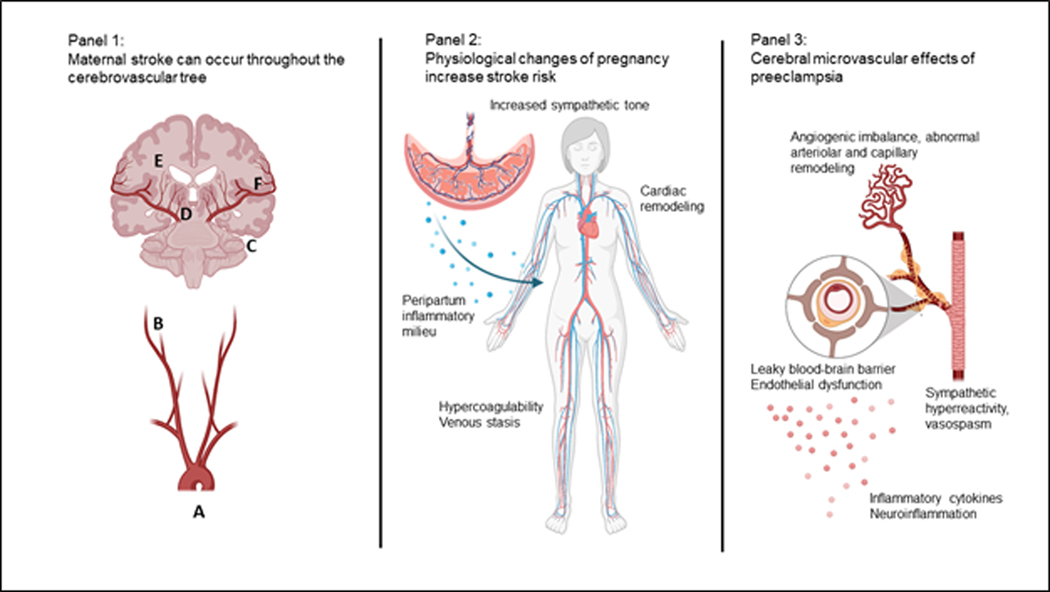Figure 3:
Panel 1: Stroke in pregnancy or puerperium can occur due to pathological mechanisms throughout the cerebrovascular tree, including cardioembolism (A), cervical artery dissection (B), venous sinus thrombosis (C), rupture of vascular malformations (D), hypertensive intraparenchymal hemorrhage (E), or reversible cerebral vasoconstriction syndrome causing intracranial vasospasm and/or convexity subarachnoid hemorrhage (F).
Panel 2: Physiological changes of pregnancy affecting the cardiovascular, hematological, and immune systems may all increase stroke risk. Pathological complications of pregnancy such as peripartum cardiomyopathy or preeclampsia exacerbate this risk.
Panel 3: At the microvascular level, pathophysiological changes associated with preeclampsia may contribute to increased stroke risk, including neuroinflammation, leakiness of the blood-brain barrier, abnormal cerebral autoregulation, and sympathetic hyperreactivity.
Created with BioRender.com

